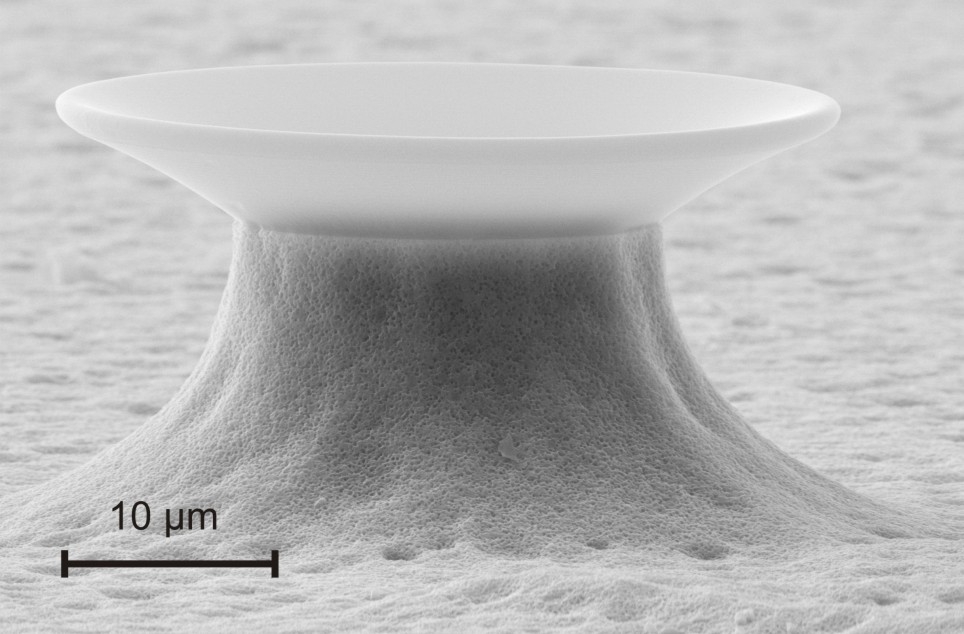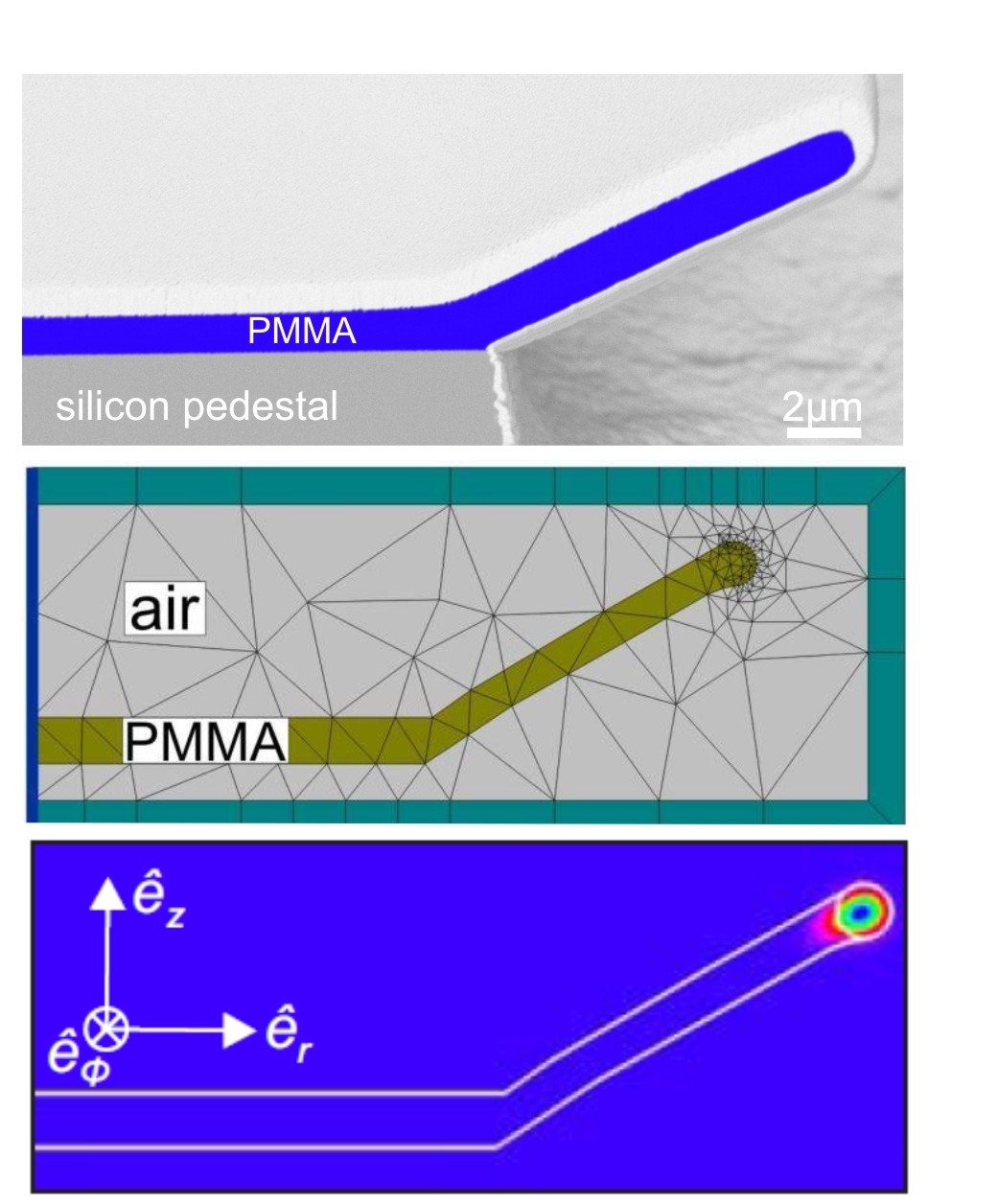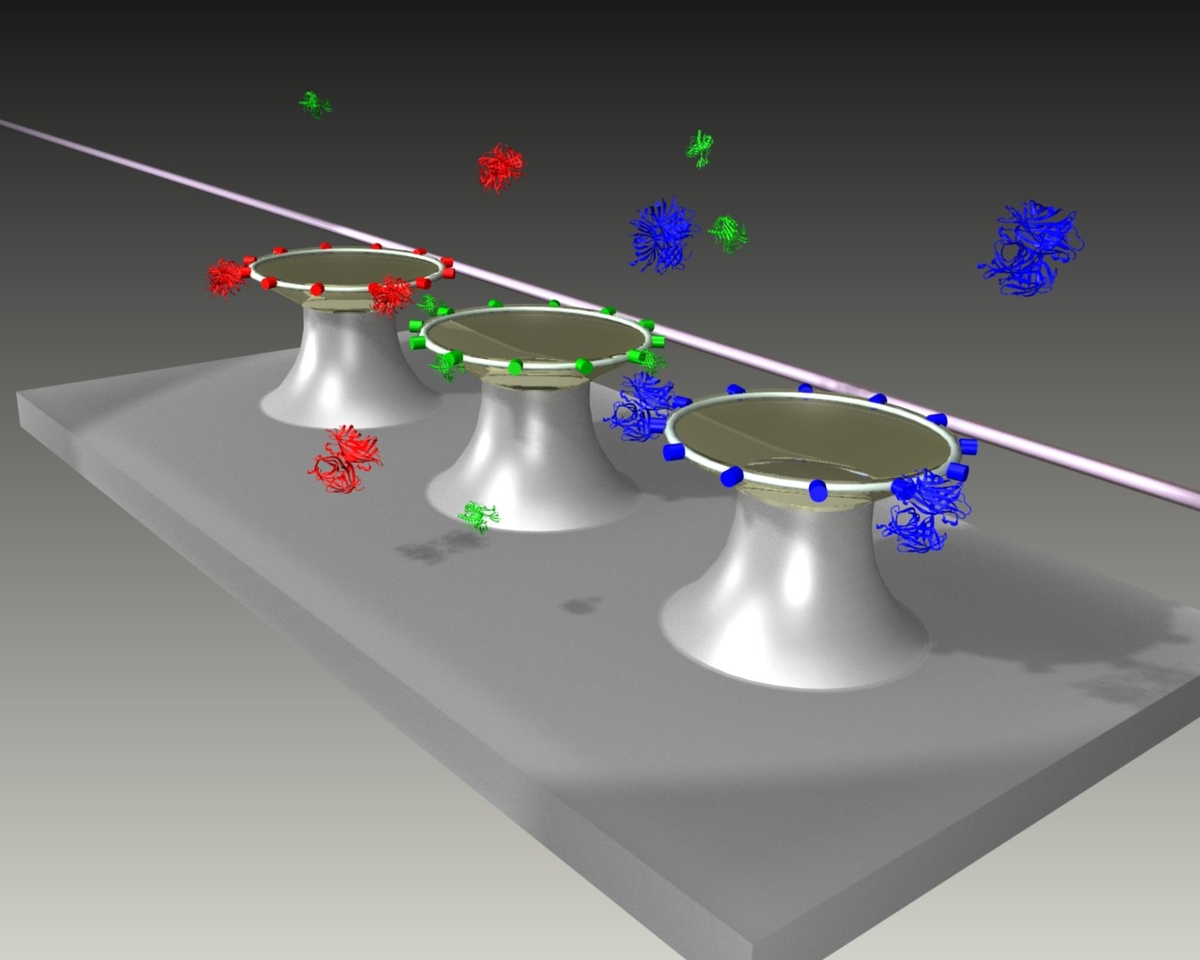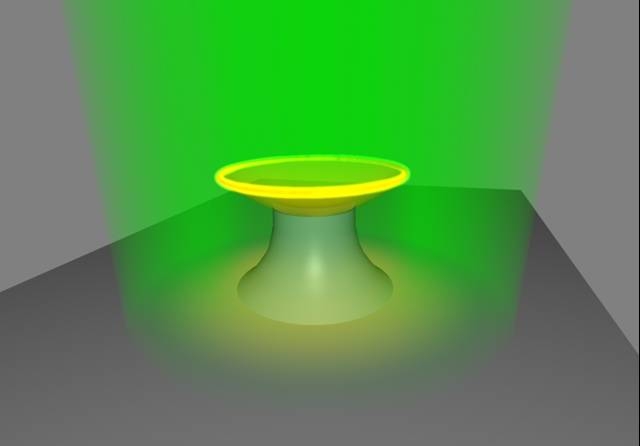A5.4: Optical Biosensors on the Basis of Micro-Disk Resonators
Subproject Leader: Heinz Kalt
Contributing Scientists:
Present: Mario Hauser, Torsten Beck, Tobias Großmann, Daniel Rülke
Past: Wolfgang Löffler
Label-Free Sensitive Biodetection
The aim of the project is the realization of photonic sensors on the basis of whispering gallery mode (WGM) resonators for detection of proteins. The main advantages of this approach in contrast to other detection schemes are the possibility of a highly parallel detection, sensitivity on the few molecule level and the fact that the molecules do not have to be labeled.
Polymer Microresonators
As polymer microresonators are essential components for the realization of large-scale and low-cost fabricated photonic devices, we started the development of novel high-Q PMMA resonators with a goblet-type geometry and an ultra-smooth surface [1].
The PMMA microcavities are fabricated in a four-step process that is applicable for mass production. Measurement of the modal structure and quality factor of the resonators can be performed in the near infrared as well as in the visible spectral region using different single-mode, tunable, external-cavity diode lasers with a small linewidth. The light is coupled to the resonator using a tapered optical fiber. The quality factors amount to 2·106 in the infrared and 1·107 in the visible spectral region.
For a better understanding of the measured modes and for visualization of the spatial distribution of the excited WGMs in the rotationally symmetric microcavities, 2D finite element simulations were performed in close collaboration with the Zuse Institut Berlin (ZIB) – DFG-Center Matheon (F. Schmidt).
In order to study the effect of the tapered fiber on the microresonators’ modes and their Q factors, we also performed three dimensional numerical simulations in close collaboration with subproject A5.6 (K. Busch, J. Niegemann and R. Diehl). These classical electrodynamics, full vectorial 3D numerical simulations are performed by applying the Discontinuous Galerkin Time-Domain (DGTD) method [2].
Biosensing
In order to demonstrate the applicability of the resonators in biodetection Bovine Serum Albumin dissolved in phosphate buffered saline (PBS, pH 7.4) was used. Due to the adsorption of the protein to the resonator, the effective refractive index of the mode changes and the resonance shifts to larger wavelengths. The experimentally found shift of the optical mode is about 40 pm, which is the expected order of magnitude for a 4 nm thick BSA monolayer.
Micro Lasers
For development of narrow-linewidth, coherent light sources which can be integrated on a chip and have low lasing thresholds, WGM microcavities with high Q factors combined with large oscillator strength gain materials are a promising approach. For this, two different ways for integration of gain materials to the goblet microcavities have been developed.
In our first realization, dye molecules such as rhodamine 6G, which are suitable for direct integration in polymeric host matrices, were integrated into the goblet microcavities. This approach allows creating microcavities that may be used as lasers without any additional process steps for their fabrication [3].
In the second approach, developed in collaboration with project A5.5, low-threshold microcavity lasers are fabricated by evaporating a thin film of the organic semiconductor Alq3 doped with a laser dye onto high-Q goblet microcavities [4].
|
[1] |
T. Grossmann, M. Hauser, T. Beck, C. Gohn-Kreuz, M. Karl, H. Kalt, C. Vannahme, and T. Mappes, High-Q conical polymeric microcavities, Appl. Phys. Lett. 96, 013303 (2010) |
|
[2] |
J. Niegemann, et al., Photon. Nanostruct.: Fundamentals Appl. 7, 2-11 (2009) |
|
[3] |
T. Grossmann, S. Schleede, M. Hauser, M. B. Christiansen, C. Vannahme, C. Eschenbaum, S. Klinkhammer, T. Beck, J. Fuchs, G. U. Nienhaus, U. Lemmer, A. Kristensen, T. Mappes, and H. Kalt, Low-threshold conical microcavity dye lasers, Appl. Phys. Lett. 97, 063304 (2010) |
|
[4] |
T. Grossmann, S. Klinkhammer, M. Hauser, D. Flöss, T. Beck, C. Vannahme, T. Mappes, U. Lemmer, and H. Kalt, Strongly confined, low-threshold laser modes in organic semiconductor microgoblets, Opt. Express 19, 10009-10016 (2011) |
List of Publications 2006-2011 as PDF
Subproject Report 2006-2010 as PDF



